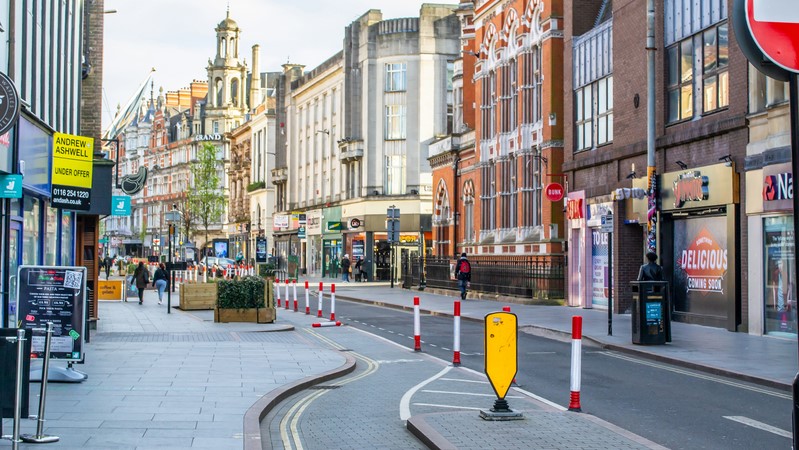
Changes to planning rules in England that came into effect on 1 August could see up to 80% of shops and other commercial premises on high streets being replaced by housing, the Town and Country Planning Association (TCPA) has warned.
The TCPA raised concerns that the housing put in place of commercial premises without planning permission via permitted development rights could go against the government’s recent call for quality.
It has produced research with University College London (UCL) to map the possible effect of the government’s changes to planning rules in England.
Examining four case study areas representing different types of built environment – Barnet, Crawley, Huntingdonshire, and Leicester – it found that 80.3% of shops and other commercial buildings could be lost to residential conversion. This figure was as high as 89% for Barnet. In Leicester and Crawley it stands at 77%, and in Huntingdonshire, 75%.
The TCPA warned that the changes meant councils would have “very little say over” what happens to high streets and whether new housing meets people’s needs. Planners will only be allowed to assess new developments against a “short list” of requirements drawn up by central government.
The TCPA said: “These changes signal the latest in a series of expansions of PDRs by the government since 2013. This is despite PDRs being widely criticised for producing large numbers of shockingly low-quality homes which are undermining people’s health and well being.”
Fiona Howie, the TCPA’s chief executive, added: “We recognise the need for more homes and the desire to regenerate high streets. But we need new homes to be high quality and for town centres to be able to provide a mixture of services and amenity space. This latest expansion of PDRs further reduces the ability of local authorities and communities to shape their local areas. This is not the right approach if government really wants to ‘build back better’ and to revitalise our high streets.
“This latest expansion of PDRs also contradicts the government’s recent emphasis on high-quality design and beauty. Design codes could be a powerful tool but, as this research has shown, in urban areas around 80% of shops and premises could be converted to homes and local plan policies and design codes would not apply.”










